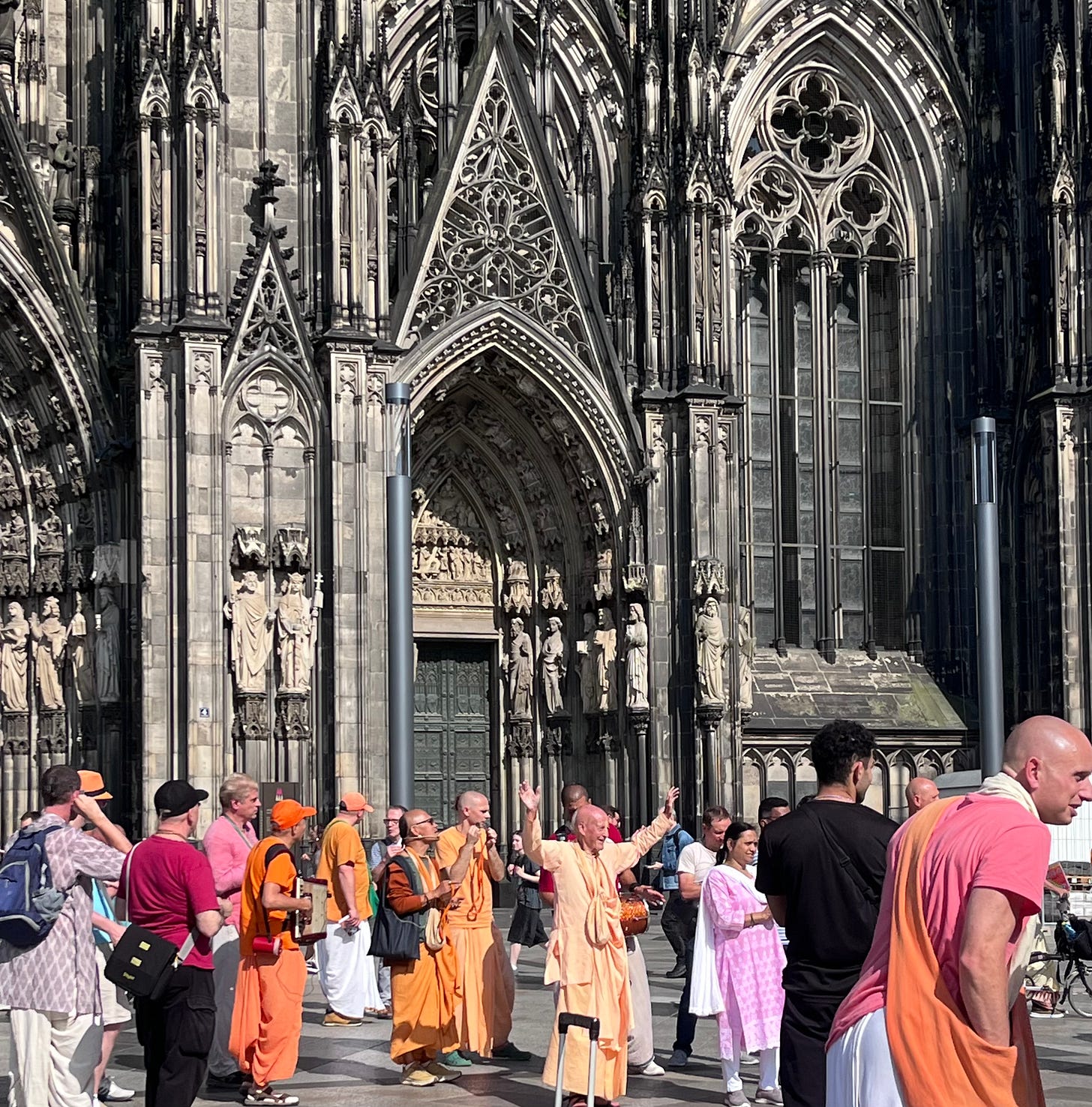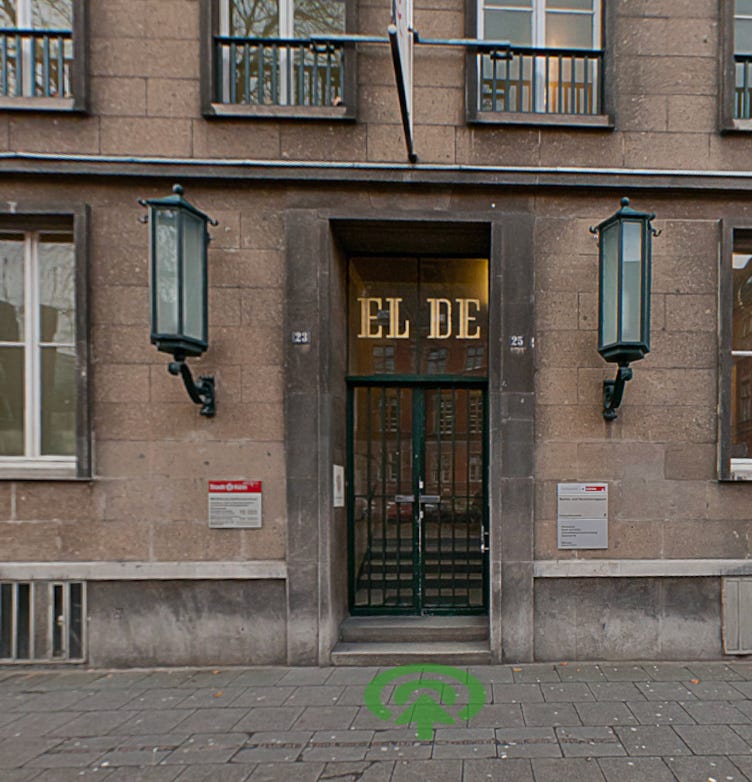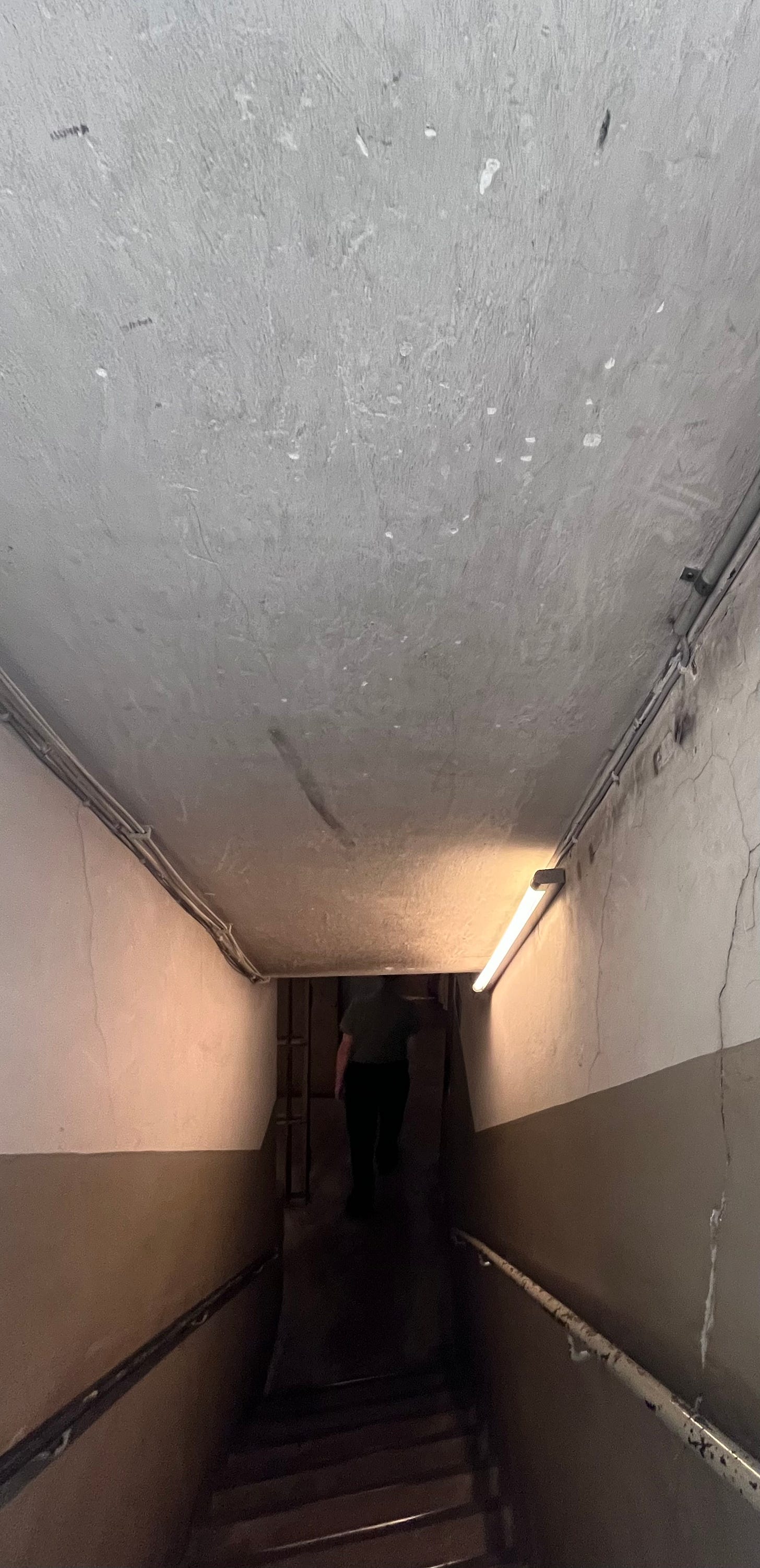Confronting the past in Cologne
A museum documenting the history of the Gestapo in Cologne and the Rhineland region.
Where I am sitting right now, in the northwest of Germany, the city of Cologne—Köln—suffered 262 bombing raids during World War II. During the first “thousand-plane” raid ever launched, in 1942, the British Royal Air Force destroyed or damaged tens of thousands of buildings in a mere hour and a half: homes, government buildings, banks, you name it. The cathedral was hit but did not fall due to pilot error (or perhaps divine intervention). Half a thousand people were killed; most had fled underground to bomb shelters. When they came out, the city around them lay in ruins.
Today you’d never know any of this. The cathedral sits with spacious plazas all around it, the modern train station immediately adjacent. Except for the lack of really old buildings (apart from churches) in the “old-town” area, you can’t tell that anything bad ever happened here. Cologne is hospitable, bursting with life yet calm, and startlingly diverse.
People in the street, except for obvious tourists, mostly speak a German that I can somewhat understand because mein Deutsch ist nicht so gut, but racially (if I may use that term) they are decidedly diverse. That teen couple entwined in their subway seat? They look Asian, but they murmur to each other in German. The Muslim family with the elegantly clad hijabi wife and the bearded husband? They’re speaking German, too. When I visited the cathedral yesterday, a colorful group of Hare Krishas was revving up the crowd in the cathedral’s plaza, a sprightly elderly man dancing with his arms raised in the air like a belly dancer’s. A husky fellow on the perimeter was soliciting donations. In German.
But the past is not forgotten. With scrupulous Germanness, the Nazi Archive —the NS (National Socialism=Nazi) Dokumentazionzentrum—keeps careful records of the nightmare years of Nazi rule in the city and the whole region. The archive, one of the best preserved Nazi detention centers in existence and one of the largest German municipal memorials to the victims of the Nazi terror, is located in Cologne’s old Gestapo headquarters in the heart of the city. It’s a plain, light-tan building with a wrought-iron gate, four upper floors that were used for administrative work, a cellar where prisoners were crammed into a handful of tiny cells, and a courtyard where over 400 people were shot to death or hanged from a horizontal beam that could accommodate seven victims at a time.
From this building (EL-DE, L-D, Leopold Dahmen, after the jeweler who built and owned it before the Nazis took it over), according to the extensive website, “Gestapo officers organized the systematic surveillance of the population…[spreading] violence and terror.” From here they sent Cologne's Jews to ghettos and extermination camps. Here they imprisoned dissidents, any forced foreign workers who stepped out of line, minorities, and disfavored others. Here the inmates were brutally interrogated, beaten, and tortured here, often without knowing why.
From the first floor, you can go up to exhibition rooms or down a dark staircase to the cellar. We choose the cellar. Might as well get it over with, we think. But I hesitate at the top.
Behind a barred doorway at the bottom are about 10 cells where prisoners were kept—up to 33 to a room.
The cell walls were last painted in 1943, before the Reich fell in 1945. On them still appear about 1,800 penciled and carved graffiti messages, sketches, poems written by prisoners over that two-year period as they waited for interrogation, beatings, deportation, transport to concentration camps, torture, or death.
The prisoners were both men and women— French, Ukrainian, Russian, Polish—and other foreigners whom the Nazis had imported into Cologne as forced labor from their conquered lands. Cologne citizens were also caught up in the dragnets. They scrawled messages:
“Dear comrades, I was held here because I hid my friends. Don’t know when they’ll let me go again. Nyussa Tsheyesnova.”
“Imprisoned here and have no idea.”
“I’ve not done anything and I have no idea why I’m here.”
When in the early 1970s the push began to expose what had gone on in the EL-DE building, former prisoners spoke:
“Most of those [of us] who were taken out never came back. […] We slept sitting on the floor: I was the second or third. And then the next person sat between my legs, and then the next person again. That's how we sat and slept. Our heads on the shoulder of the person in front of us. […]"
I begin to feel short of breath. I know how they slept. I’ve seen the pictures. Not here.
I edge out of the last cell and into a corridor, which leads outside, emerging into bright sunlight in the central courtyard. The walls of the courtyard have been hung with mirrors, making it seem both bigger and smaller. I see myself—as the mirrors were meant to make me do.
My companion and I then climb the stairs to an upper floor. Here, in a series of rooms, is a documentary history of the Nazi party starting in the 19-teens. At that time, the victors in the Treaty of Versailles had imposed heavy reparations on Germany, spawning inflation that emptied people’s pantry shelves and stoked anger. Hitler channeled the anger, attacking “Fremden,” “strangers”—gypsies, Jews, homosexuals, but especially Jews. Jews were to blame for inflation, for hungry children, for everything.
There’s a massive invasion at our southern border that has spread misery, poverty, crime, disease, and destruction to communities all across our land, nobody’s ever seen anything like it. [Trump’s words as he accepted the 2024 nomination]
As all politicians must, Hitler was playing twin games of repulsion and attraction. It was hard to attract an important voting bloc, women, with his aggressiveness and cruelty, so Hitler courted women with “safety”: “The Nazis want to disenfranchise women…so says the opposition,” he thundered, arguing that children were hungry, and mothers were suffering. A strongman—Hitler—was needed to fix “the current situation.” Women needed a “firm hand” to “guide the steering wheel” of the country. He could fix it all. They would be safe.
From the 2024 campaign: “I’m gonna protect women, whether they want it or not.”
In Viktor Frankl’s Man’s Search for Meaning, the memoir of his time struggling to survive in Nazi concentration camps, Frankl observed that prisoners who found meaning in their lives, in being alive, were more likely to survive. Those survivors told themselves that someone—a wife, a friend—was waiting for their release; that they had important work to finish. That once the Americans arrived, things would be better. Others were more likely to die.
But what happens when people suffer, as we all do, and can’t see or identify a point? When they fail to tell themselves the story of their own lives in a way that gives those lives meaning?
One possibility is to let someone else, a charismatic leader, tell them their story.
In a recent New York Times opinion piece, Dr. Molly Worthen reflected on such leaders and how they attract support: “Charisma is a kind of storytelling. It’s an ability to invite followers into a transcendent narrative about what their lives mean….[and] that speaks to the anxieties of their moment in history….”
While Frankl urged his fellow prisoners to find meaning in their suffering and to make the choice to endure, I think many audiences now are being told the story of their own suffering—of anger, economic decline, their loss of stature—by a storyteller who magnifies their anger through his own distorted lens. In his “weaves,” our current leader makes white people feel deprived of their power even when every person they voted for is also white. He pins the blame for every problem on someone else—a foreigner, a migrant, a criminal, a liberal, a black person, a brown person, a handicapped person, a woman. Anyone. And as the blame is shifted, his audiences feel the relief. It’s not their fault.
He never shows them the real cause of their suffering: his own clique sucking tax money, rich defense contracts, and even social control through widespread propaganda up toward the wealthy and away from the American people, a large part of whom now identify themselves with him, his wealth, his lifestyle, his crude bravado.
I play to people's fantasies. (Trump in The Art of the Deal.)
In the 1970s, civil protests prompted the city of Cologne to confront its past. The old EL-DE building was opened up, its files still there on metal shelves, over 1,800 inscriptions carved, lipsticked, and penciled onto the walls. Research began. The museum opened in 1987 and the permanent collection was developed in the 1990s.
As I walk around Cologne today, I see a place steeped in diversity. I see bakeries and small supermarkets and upscale clothiers and resale shops. I see a lot of babies in baby carriages, children in light bicycle wagons behind their parents’ bikes on sidewalk bike lanes—people living their lives. This is what it looks like when people have called their ghosts out of the closet and onto the carpet.
Today Cologne remembers. It examines. It reflects. It repents. And it warns.
Sources:
Frankl, Viktor. Man’s Search for Meaning. Accessed 6-20-2025. Internet Archive: https://archive.org/details/viktor-emil-frankl-mans-search-for-meaning/page/n37/mode/2up
NS-Dok website: https://museenkoeln.de/ns-dokumentationszentrum/Leitbild
Trump, Donald. RNC Nomination Acceptance Speech. Accessed via YouTube 6-24-2025.
Worthen, Molly. “Charisma Rules the World.” 6-16-2024. New York Times. https://www.nytimes.com/2025/06/16/opinion/charisma-history-trump.html?unlocked_article_code=1.PU8.eXDu.CAx__RzcOtsD&smid=url-share















Important to know and remember. thank you for this essay.
Painfully and exquisitely narrated. We must confront our history, not deny it, if we are to become better people, to become a better nation. Thank you, Em.